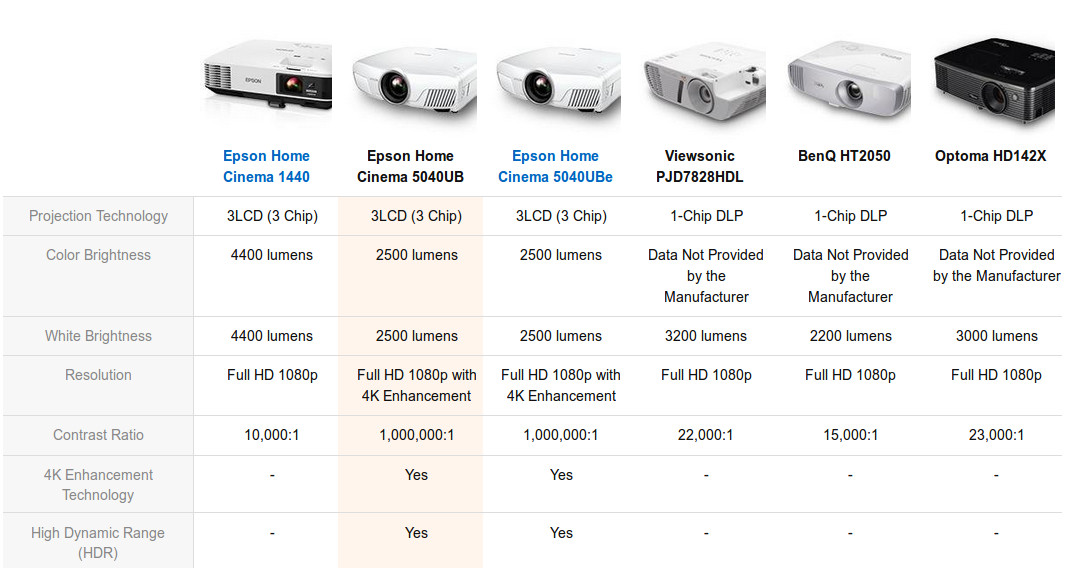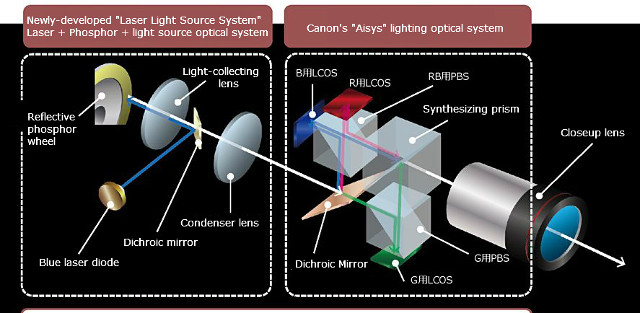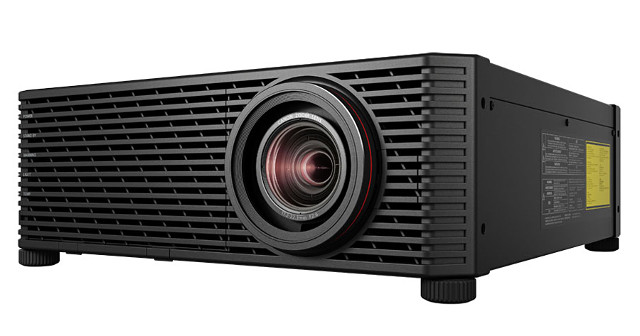At the beginning of the year, I wrote about Texas Instruments’ DLP technology for affordable 4K projectors, and the company’s DLP 0.67″ digital micromirror device (DMD) was expected to be found in 4K projector in the second half of 2016. So I went on Amazon, and I could find lots of “4K UHD projectors” with prices starting at $599, but if we look into details we may find some of those are “4K projector” with a 1280×800 resolution… And many of the ones selling in the $2,000+ range don’t list their native resolution with many able to handle 4K input, but actually projecting at 1920×1080 as can be seen in the table below.

The most honest companies promote those models as “projectors with 4K Enhancement”, but if you want a true 4K projector, the cheapest option is probably Sony VPL-VW350ES that goes for close to $10,000 on Amazon. CNET has a review of this model, and finds it to be very good with “excellent 4K content”, but “for most 4K current sources and all 1080p material, its resolution advantage over 1080p projectors is negligible”. I’m writing about 4K projectors today, as I’ve come across an article on Nikkei Technology about Canon 4K600STZ, the “world smallest and lightest” 4K projector based on laser technology, and capable of delivering a brightness of up to 6,000 lumens.
I guess miniaturization is still in its infancy for such technology, as the projector weights 26 kilograms and measures a good 624 x 559 x 201 mm. The projector features Canon’s Aisys 0.74″ 4K-LCOS (liquid crystal on silicon) 4096×2400 panel, and the company managed to reduce the size by combining it to a new laser light source. The architecture of the new system is described in the diagram below.
 6,000 lumens brightness was achieved on some laser modules only, and it’s likely the final product may have a lower maximum brightness. The light source can be used for about 20,000 hours, and up to 40,000 hours if brightness is adjusted lower.
6,000 lumens brightness was achieved on some laser modules only, and it’s likely the final product may have a lower maximum brightness. The light source can be used for about 20,000 hours, and up to 40,000 hours if brightness is adjusted lower.
This type of 4K projector is mostly targeted at the enterprise with applications such as digital signage, projection mapping, CAD (computer-aided design), training simulators, etc… Canon 4K600STZ is scheduled for release in April 2017 at a cost of around ¥8 million (~ $71,000 US).

Jean-Luc started CNX Software in 2010 as a part-time endeavor, before quitting his job as a software engineering manager, and starting to write daily news, and reviews full time later in 2011.
Support CNX Software! Donate via cryptocurrencies, become a Patron on Patreon, or purchase goods on Amazon or Aliexpress






beamer for the price of a Tesla? bargain!
Looking forward to the full teardown 😉
FYI; projector listed with “4K Enhancement” are the the ones using the new Texas Instruments’ DLP technology for affordable 4K projectors (achieving a price point under $3000 US-dollars) that you mentioned in a previous article.
These features a type of “e-Shift” technology, so the DLP technically only feature 1920 × 2160 mirrors nativly, but it shifts the whole DPL mirror array vertically at least 120 per seconds (or more) to be able to display 3840 × 2160 at 60 fps on the screen, so in effect you will be watching Ultra HD (2160p) reslolution output as intended.
Checkout Epson 5040UB, Epson Pro Cinema 4040, and JVC DLA-RS400U / JVC DLA-X550R.
They all accept a true 4k signal and it does output that without downscaling. You will be able to see each pixel at 4K resolution.
For now I think that for home usage we can simply call these 4K projectors as they do not need to downscale or upscale 4K to output each pixel, even if they are technically not using a a native 4K DLP mirror array.
Tip; the Kodi / XBMC forum has a good thread about 4K projectors here:
http://forum.kodi.tv/showthread.php?tid=280698
As mentioned in that thread; it will probably be a another 2-years before we will see affordable (under $3000 US-dollars) 4K projects which DLP have native 4K resolution and thus does not need to use some type of “e-Shift” technology.